Abstract
The properties of phosphatidylinositol kinase and diphosphoinositide kinase from rat kidney cortex were studied. The enzymes were completely Mg2+-dependent. Cutscum detergent activated phosphatidylinositol kinase, but diphosphoinositide kinase was inhibited by all detergents tested. The pH optima were 7.7 for phosphatidylinositol kinase and 6.5 for diphosphoinositide kinase. On subcellular fractionation of kidney-cortex homogenates by differential centriflgation, the distribution of phosphatidylinositol kinase resembled that of the marker enzymes for brush-border, endoplasmic-reticulum and Golgi membranes. Diphosphoinositide kinase distribution resembled that of thiamin pyrophosphatase (assayed in the absence of ATP), diphosphoinositide phosphatase and triphosphoinositide phosphatase. Activities of both kinases were low in purified brush-border fragments. Diphosphoinositide kinase is probably localized in the Golgi complex.
Full text
PDF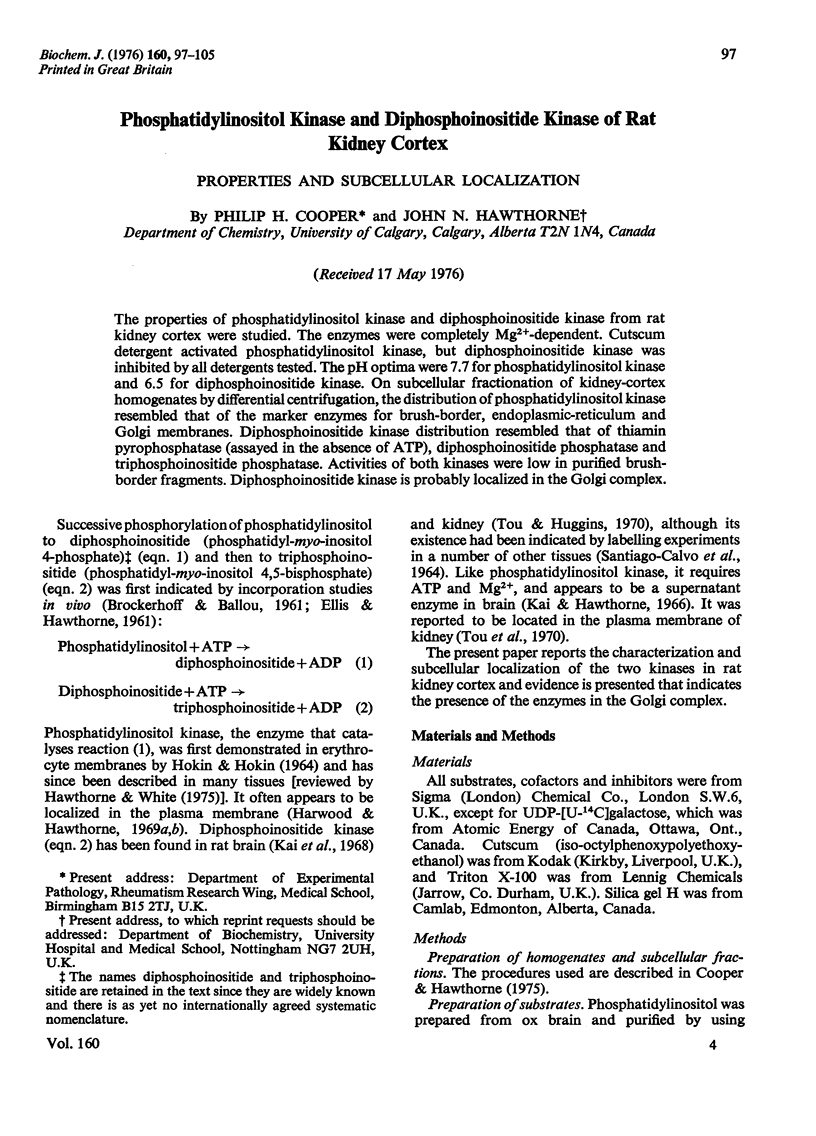
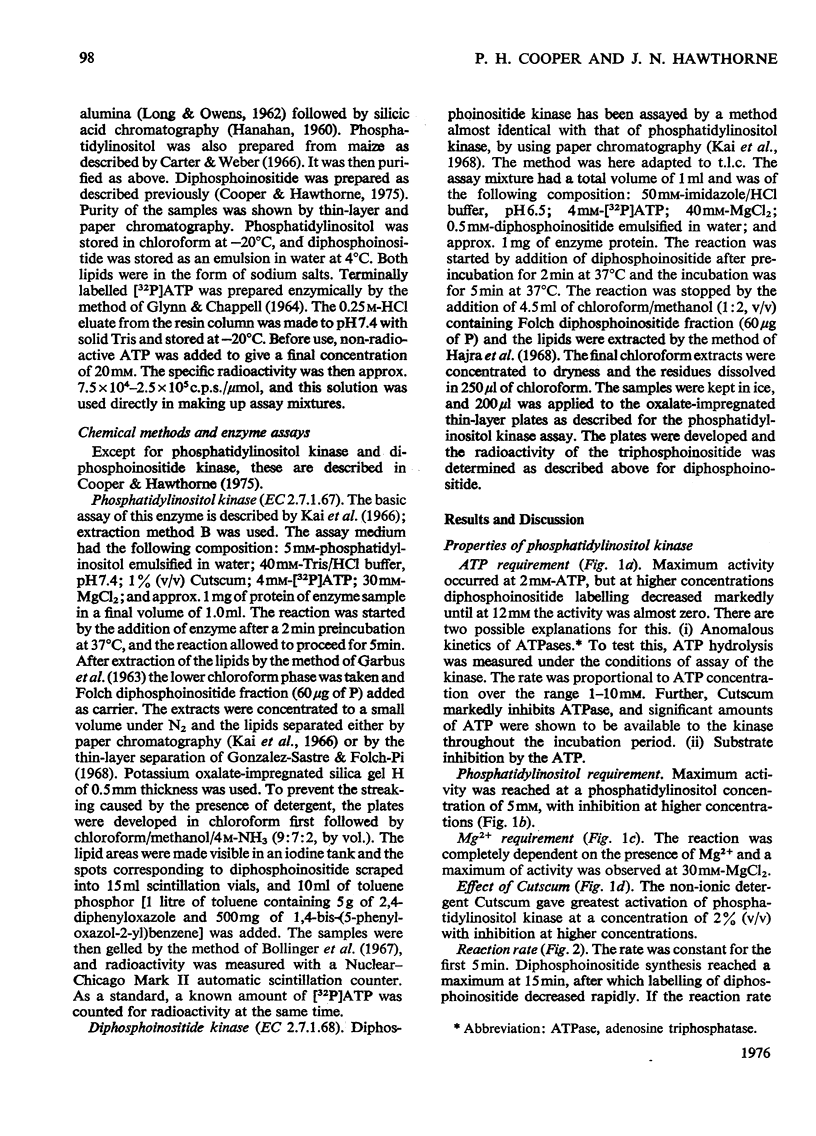
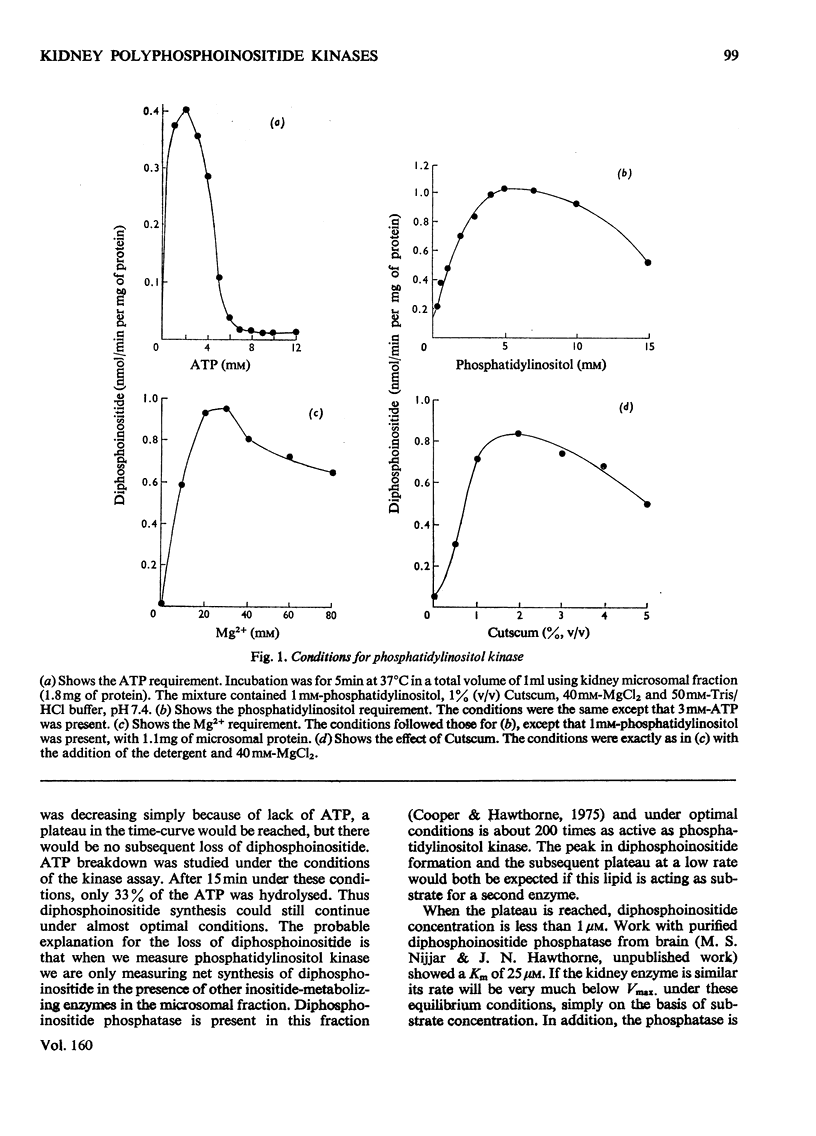
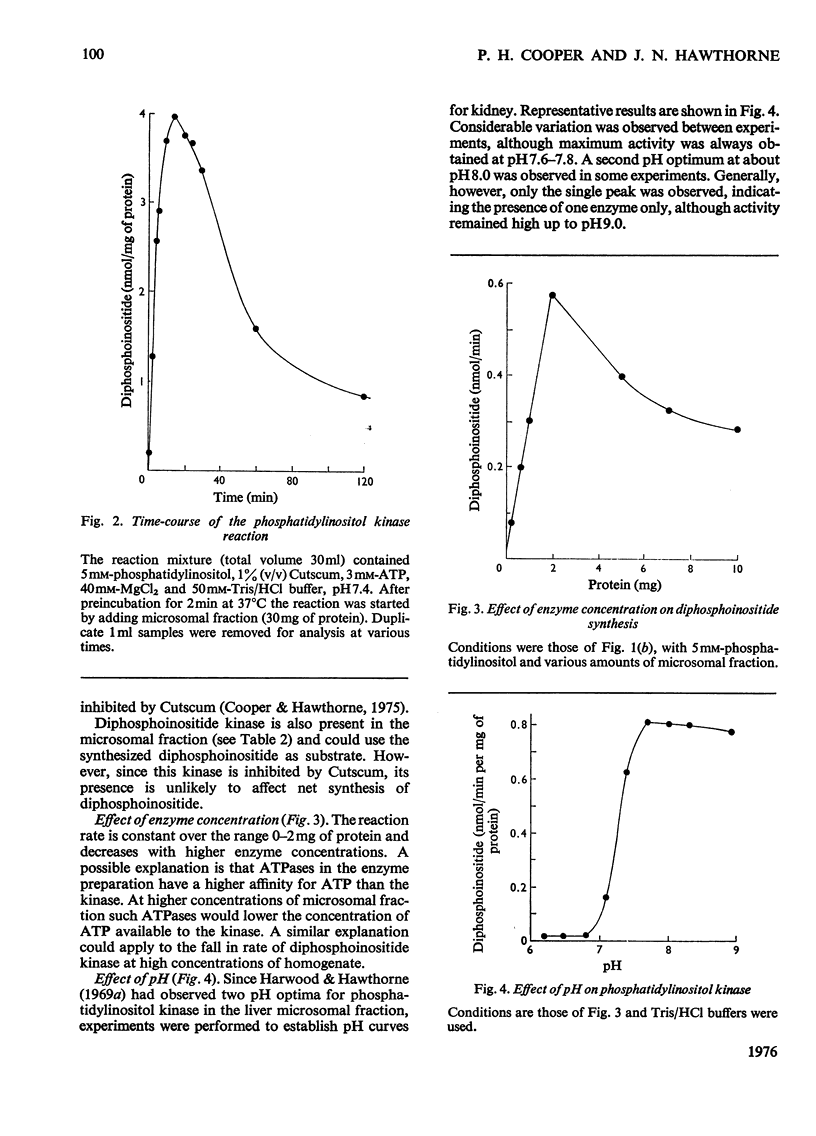
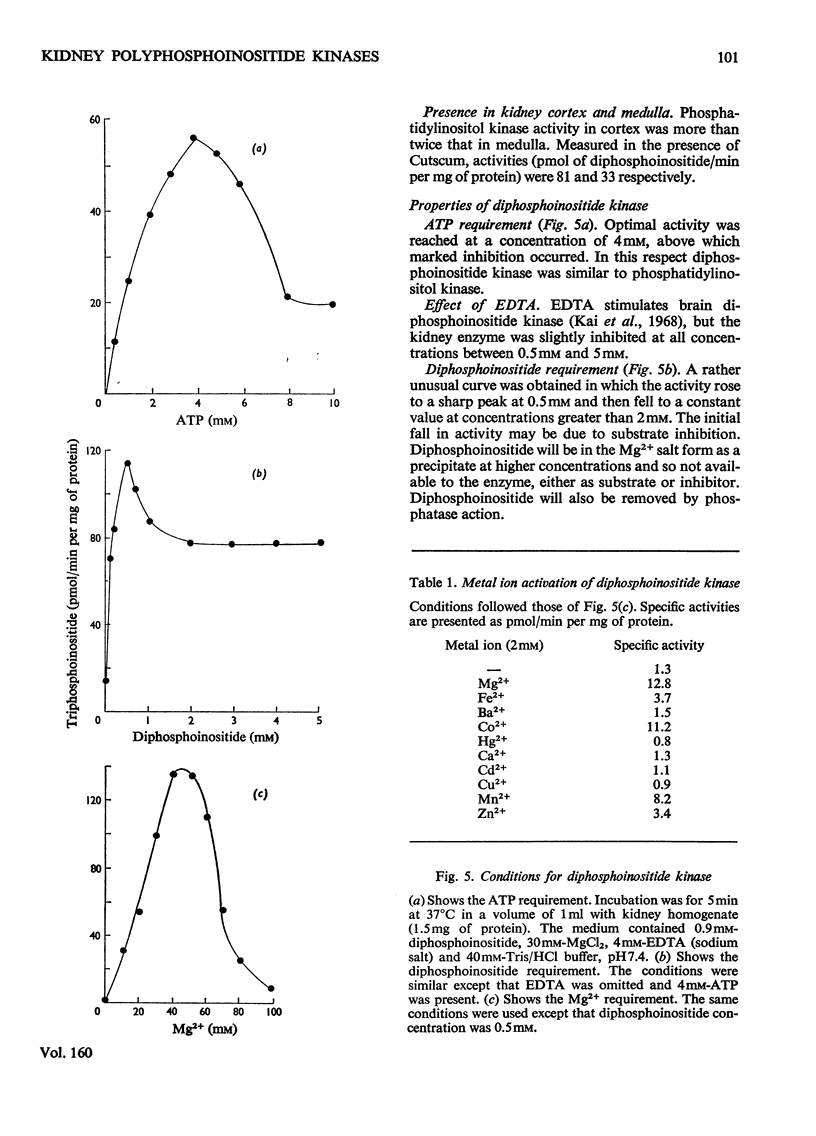
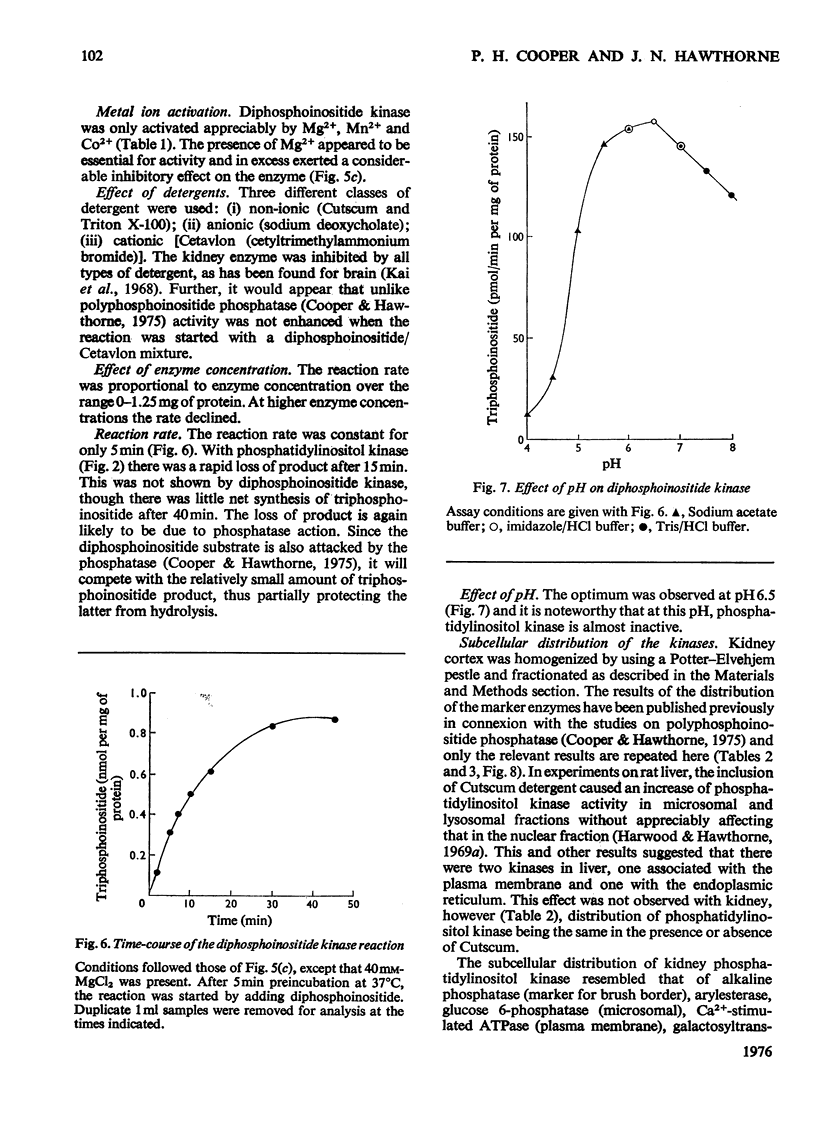
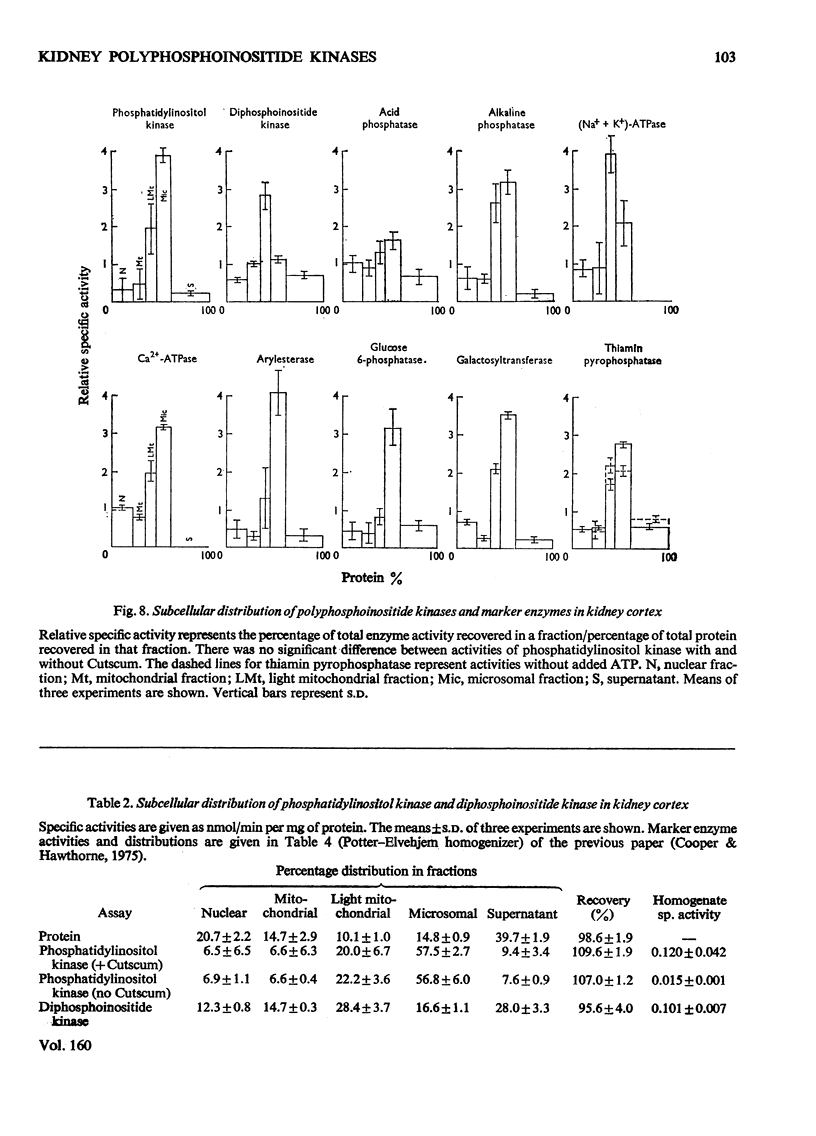
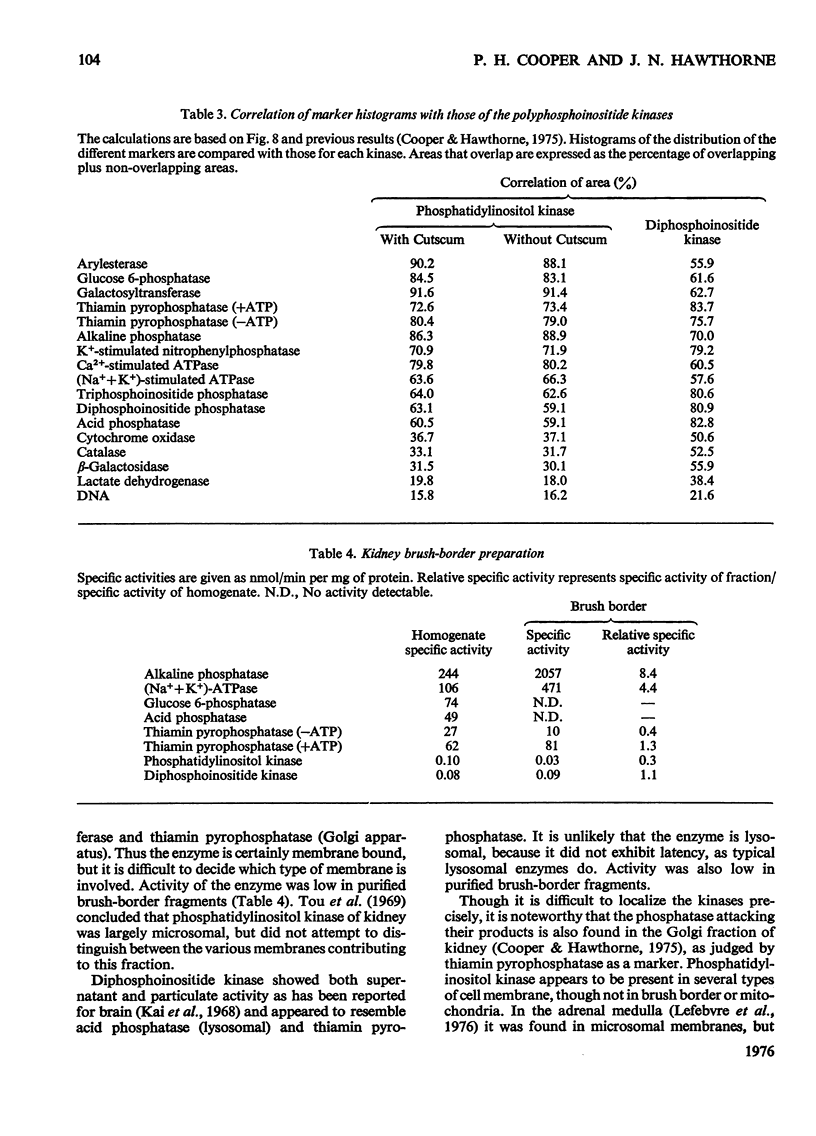
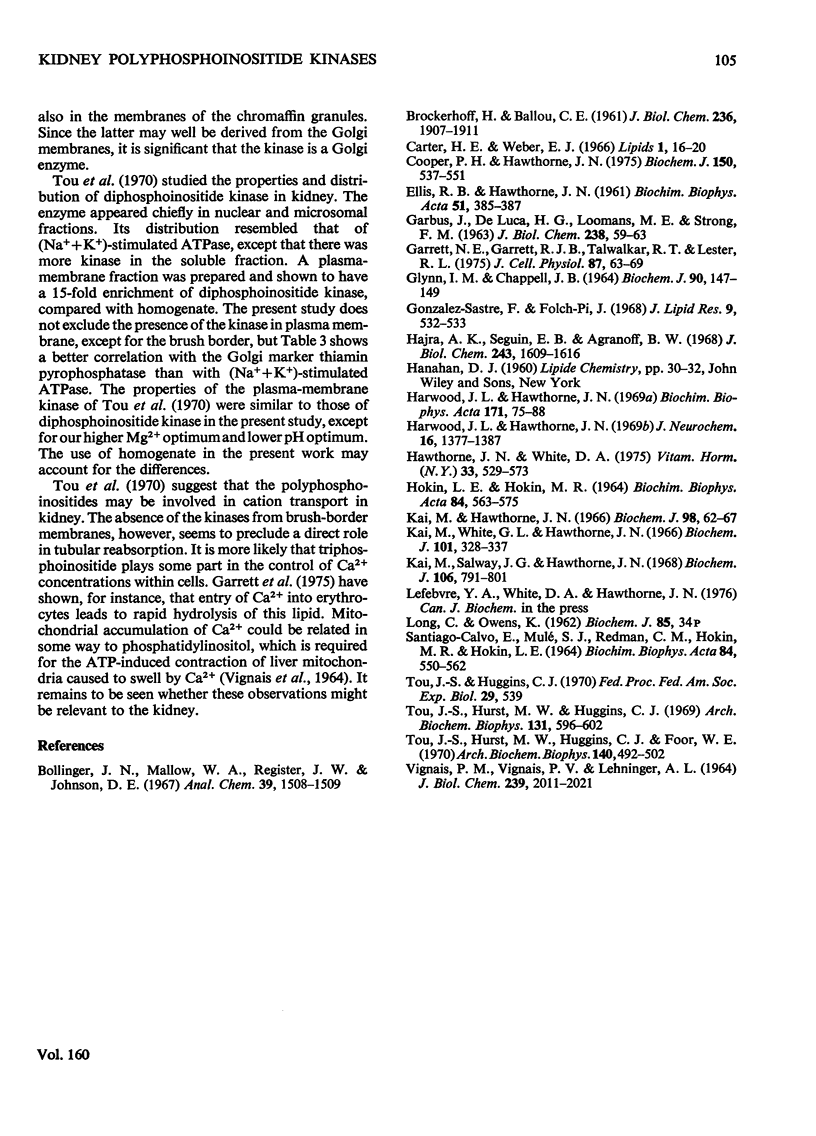
Selected References
These references are in PubMed. This may not be the complete list of references from this article.
- Carter H. E., Weber E. J. Preparation and properties of various salt forms of plant phosphatidyl inositols. Lipids. 1966 Jan;1(1):16–20. doi: 10.1007/BF02668119. [DOI] [PubMed] [Google Scholar]
- Cooper P. H., Hawthorne J. N. Phosphomonoesterase hydrolysis of polyphosphoinositides in rat kidney: Properties and subcellular localization of the enzyme system. Biochem J. 1975 Sep;150(3):537–551. doi: 10.1042/bj1500537. [DOI] [PMC free article] [PubMed] [Google Scholar]
- ELLIS R. B., HAWTHORNE J. N. The structures of beef-brain phosphoinositides. Biochim Biophys Acta. 1961 Aug 5;51:385–387. doi: 10.1016/0006-3002(61)90185-8. [DOI] [PubMed] [Google Scholar]
- GARBUS J., DELUCA H. F., LOOMANS M. E., STRONG F. M. The rapid incorporation of phosphate into mitochondrial lipids. J Biol Chem. 1963 Jan;238:59–63. [PubMed] [Google Scholar]
- Garrett N. E., Garrett R. J., Talwalkar R. T., Lester R. L. Rapid breakdown of diphosphoinositide and triphosphoinositide in erythrocyte membranes. J Cell Physiol. 1976 Jan;87(1):63–69. doi: 10.1002/jcp.1040870109. [DOI] [PubMed] [Google Scholar]
- Glynn I. M., Chappell J. B. A simple method for the preparation of 32-P-labelled adenosine triphosphate of high specific activity. Biochem J. 1964 Jan;90(1):147–149. doi: 10.1042/bj0900147. [DOI] [PMC free article] [PubMed] [Google Scholar]
- Gonzalez-Sastre F., Folch-Pi J. Thin-layer chromatography of the phosphoinositides. J Lipid Res. 1968 Jul;9(4):532–533. [PubMed] [Google Scholar]
- HOKIN L. E., HOKIN M. R. THE INCORPORATION OF 32P FROM TRIPHOSPHATE INTO POLYPHOSPHOINOSITIDES (GAMMA-32P)ADENOSINE AND PHOSPHATIDIC ACID IN ERYTHROCYTE MEMBRANES. Biochim Biophys Acta. 1964 Oct 2;84:563–575. doi: 10.1016/0926-6542(64)90126-x. [DOI] [PubMed] [Google Scholar]
- Hajra A. K., Seguin E. B., Agranoff B. W. Rapid labeling of mitochondrial lipids by labeled orthophosphate and adenosine triphosphate. J Biol Chem. 1968 Apr 10;243(7):1609–1616. [PubMed] [Google Scholar]
- Harwood J. L., Hawthorne J. N. Metabolism of the phosphoinositides in guinea-pig brain synaptosomes. J Neurochem. 1969 Sep;16(9):1377–1387. doi: 10.1111/j.1471-4159.1969.tb05989.x. [DOI] [PubMed] [Google Scholar]
- Harwood J. L., Hawthorne J. N. The properties and subcellular distribution of phosphatidylinositol kinase in mammalian tissues. Biochim Biophys Acta. 1969 Jan 7;171(1):75–88. doi: 10.1016/0005-2744(69)90107-7. [DOI] [PubMed] [Google Scholar]
- Hawthorne J. N., White D. A. Myo-inositol lipids. Vitam Horm. 1975;33:529–573. doi: 10.1016/s0083-6729(08)60972-3. [DOI] [PubMed] [Google Scholar]
- Kai M., Hawthorne J. N. Incorporation of injected [32P] phosphate into the phosphoinositides of subcellular fractions from young rat brain. Biochem J. 1966 Jan;98(1):62–67. doi: 10.1042/bj0980062. [DOI] [PMC free article] [PubMed] [Google Scholar]
- Kai M., Salway J. G., Hawthorne J. N. The diphosphoinositide kinase of rat brain. Biochem J. 1968 Feb;106(4):791–801. doi: 10.1042/bj1060791. [DOI] [PMC free article] [PubMed] [Google Scholar]
- Kai M., White G. L., Hawthorne J. N. The phosphatidylinositol kinase of rat brain. Biochem J. 1966 Nov;101(2):328–337. doi: 10.1042/bj1010328. [DOI] [PMC free article] [PubMed] [Google Scholar]
- SANTIAGO-CALVO E., MULE S., REDMAN C. M., HOKIN M. R., HOKIN L. E. THE CHROMATOGRAPHIC SEPARATION OF POLYPHOSPHOINOSITIDES AND STUDIES ON THEIR TURNOVER IN VARIOUS TISSUES. Biochim Biophys Acta. 1964 Oct 2;84:550–562. doi: 10.1016/0926-6542(64)90125-8. [DOI] [PubMed] [Google Scholar]
- Tou J. S., Hurst M. W., Huggins C. G., Foor W. E. Biosynthesis of triphosphoinositide in rat kidney cortex. Arch Biochem Biophys. 1970 Oct;140(2):492–502. doi: 10.1016/0003-9861(70)90093-7. [DOI] [PubMed] [Google Scholar]
- Tou J. S., Hurst M. W., Huggins C. G. Phosphatidylinositol kinase in rat kidney cortex. II. Subcellular distribution and kinetic properties. Arch Biochem Biophys. 1969 May;131(2):596–602. doi: 10.1016/0003-9861(69)90434-2. [DOI] [PubMed] [Google Scholar]
- VIGNAIS P. M., VIGNAIS P. V., LEHNINGER A. L. IDENTIFICATION OF PHOSPHATIDYLINOSITOL AS A FACTOR REQUIRED IN MITOCHONDRIAL CONTRACTION. J Biol Chem. 1964 Jun;239:2011–2021. [PubMed] [Google Scholar]


